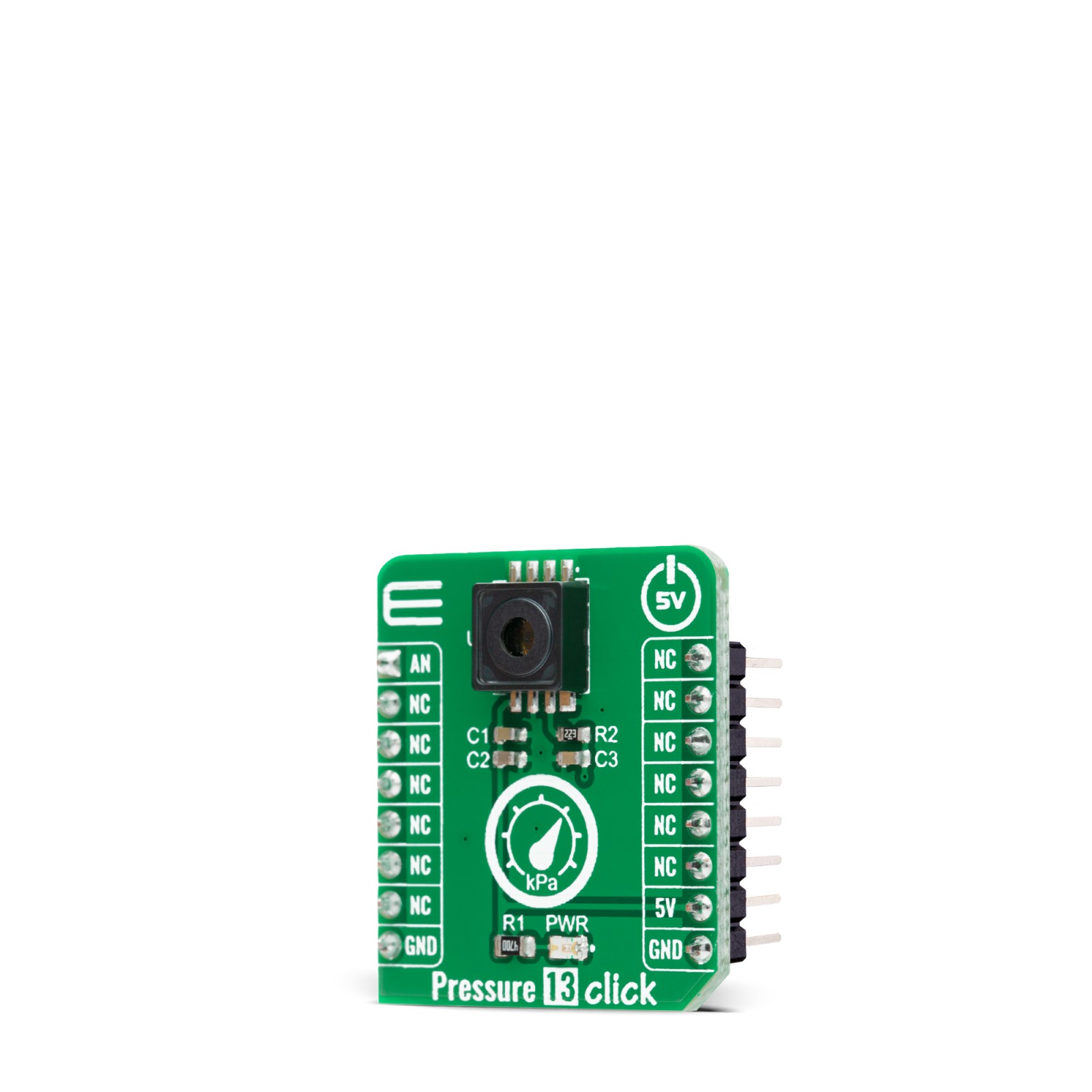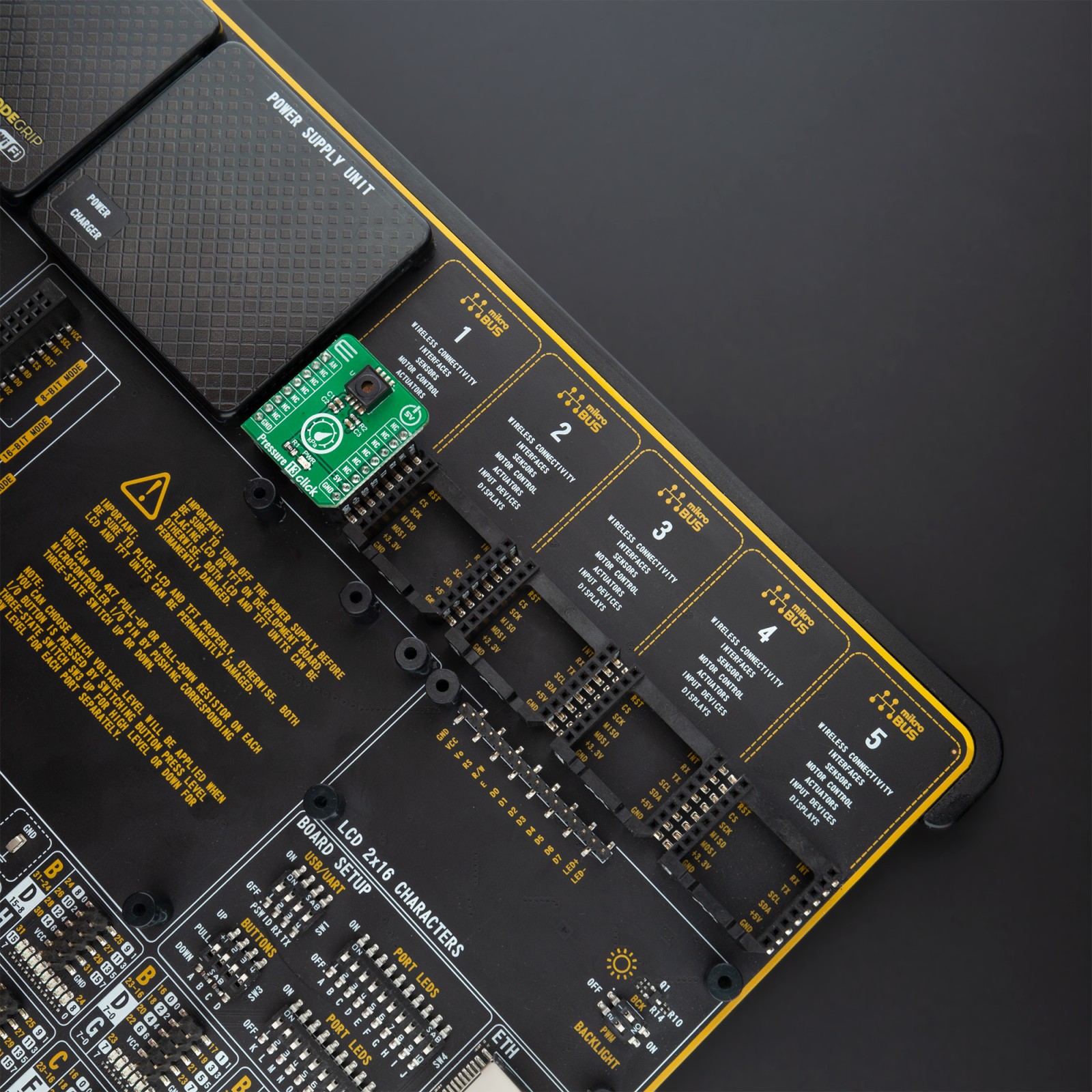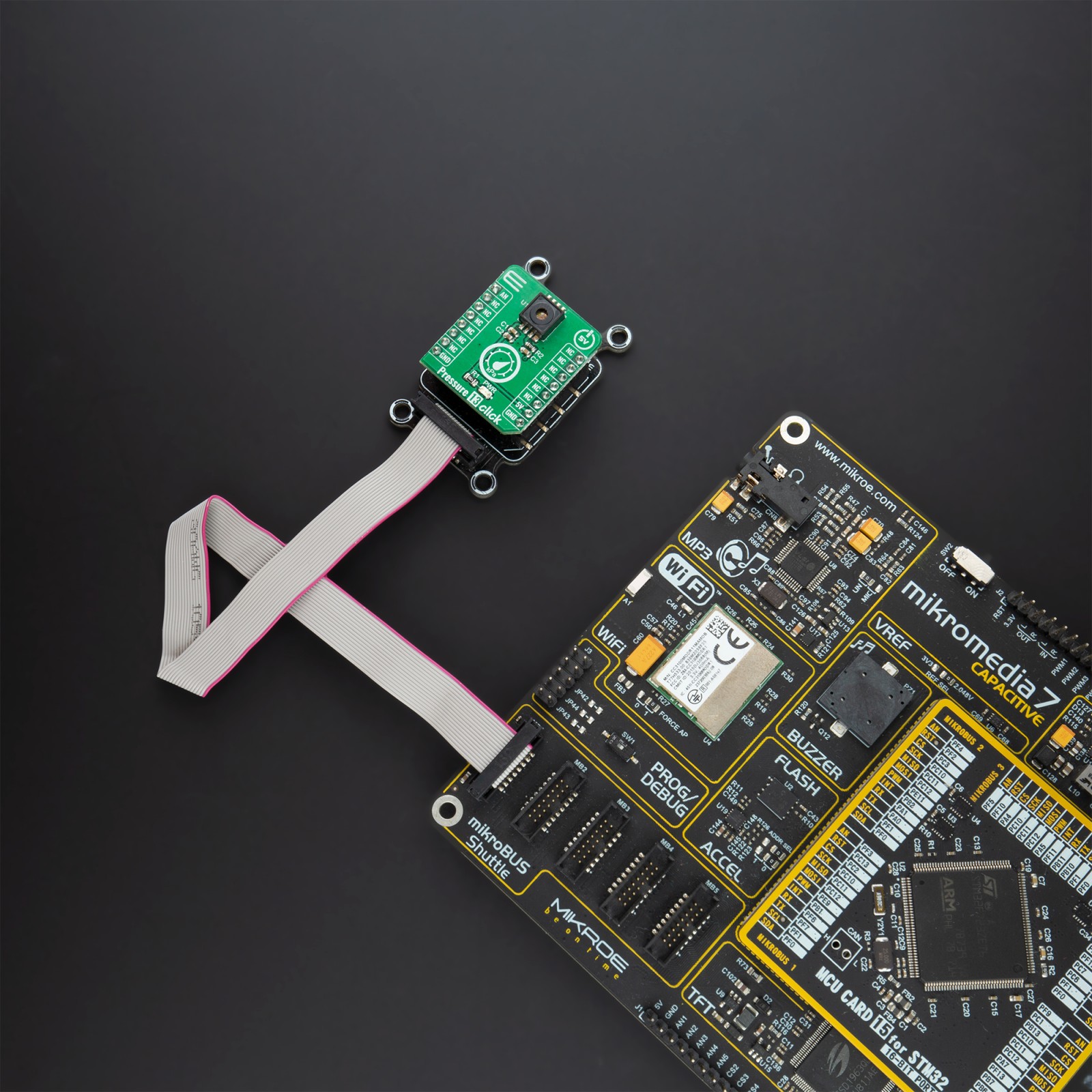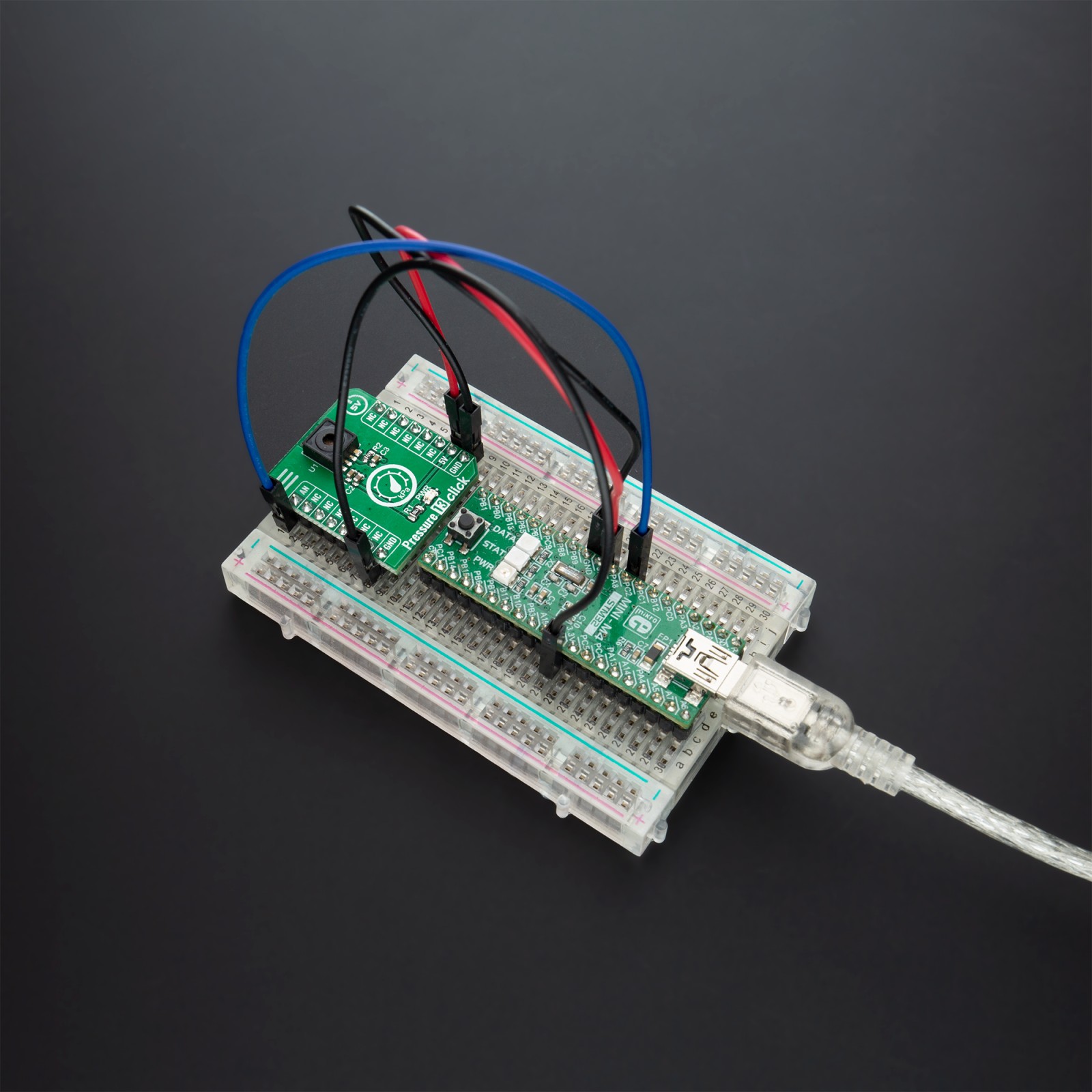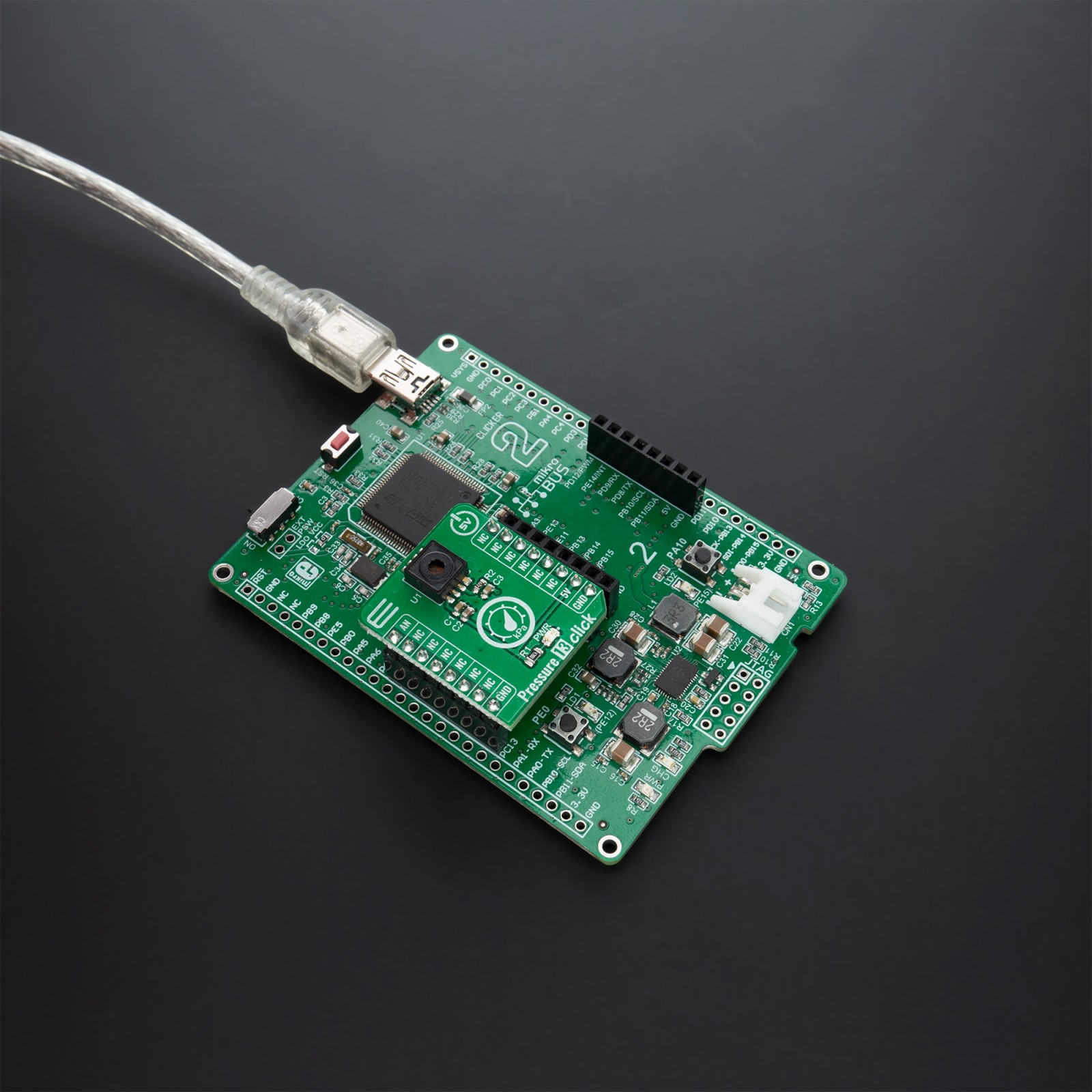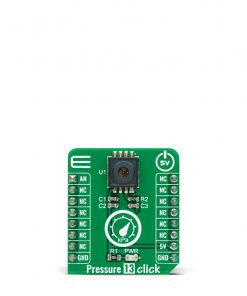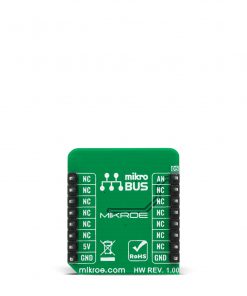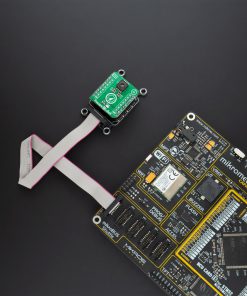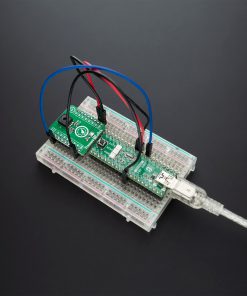Pressure 13 Click
R405.00 ex. VAT
Pressure 13 Click is a compact add-on board that contains an integrated pressure sensor for manifold air pressure measurement applications. This board features the KP229E2701, a miniaturized analog manifold air pressure sensor based on a capacitive principle from Infineon. This sensor converts the pressure of 10 kPa to 300 kPa into an analog output signal, a voltage range of 0.40 V to 4.65 V. Also, the manifold pressure data can be used to compute diagnostics of leakages and malfunctions of the exhaust gas recirculation valve. The high accuracy and the high sensitivity of the KP229E2701 make this Click board™ a perfect choice for advanced automotive applications as well as in industrial and consumer applications.
Pressure 13 Click is supported by a mikroSDK compliant library, which includes functions that simplify software development. This Click board™ comes as a fully tested product, ready to be used on a system equipped with the mikroBUS™ socket.
Stock: Lead-time applicable.
| 5+ | R384.75 |
| 10+ | R364.50 |
| 15+ | R344.25 |
| 20+ | R331.29 |


